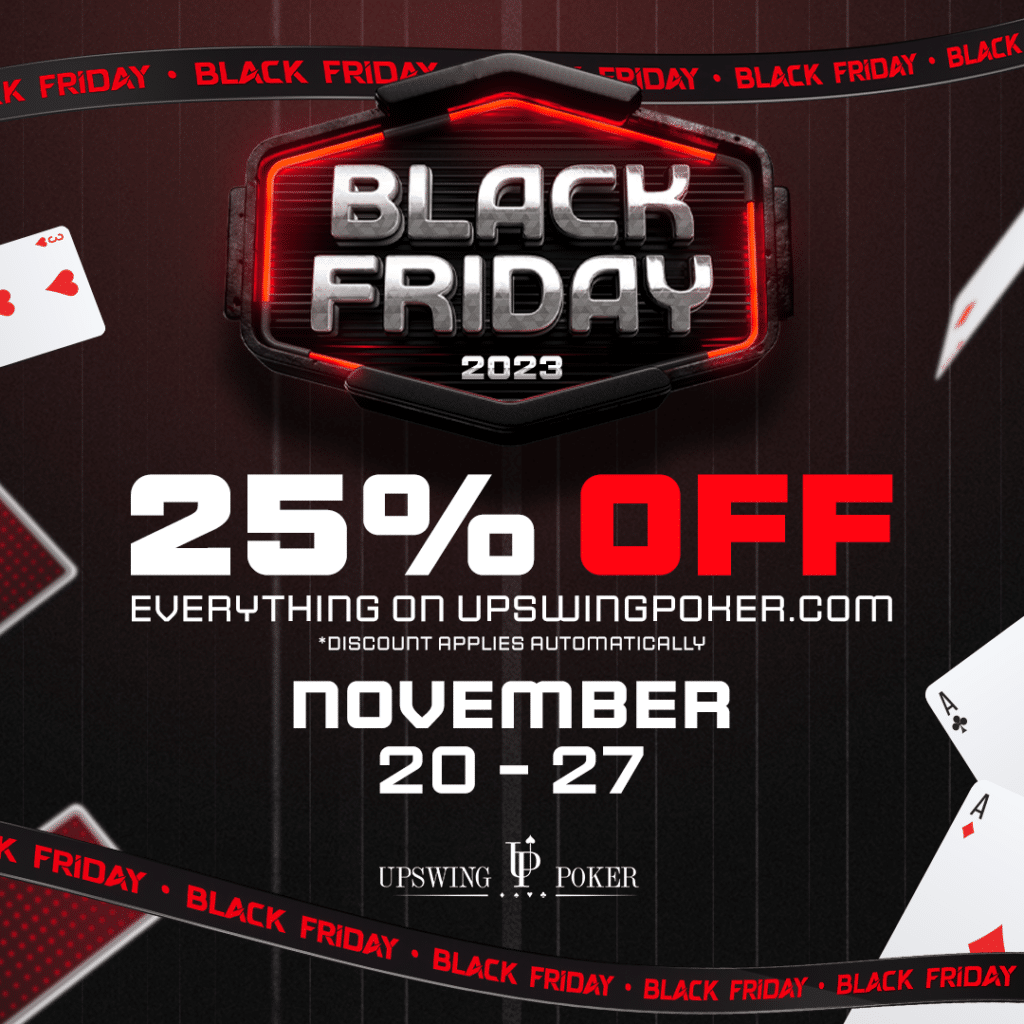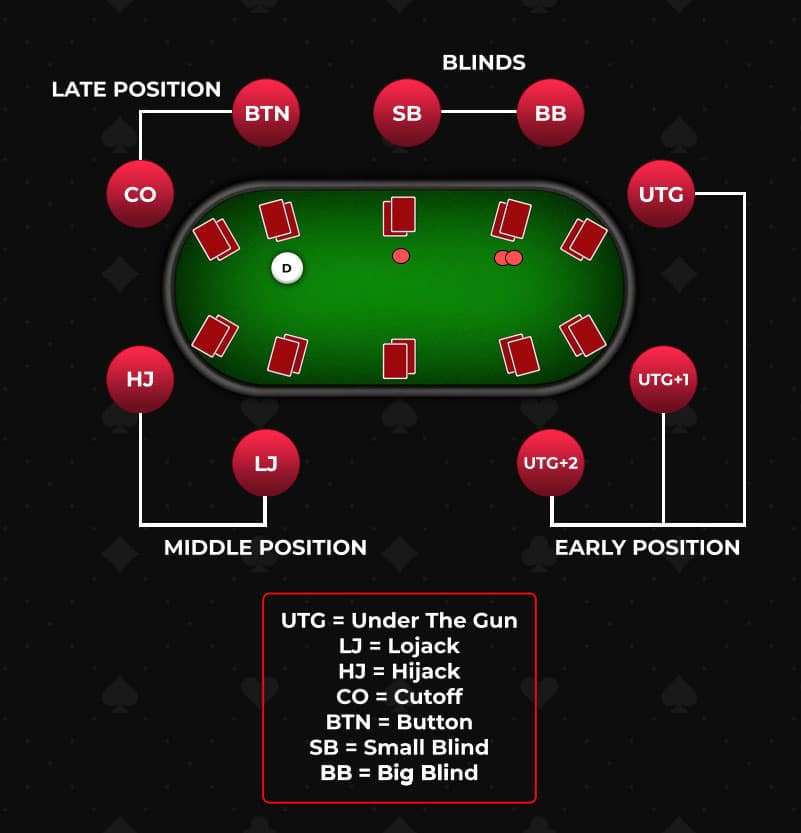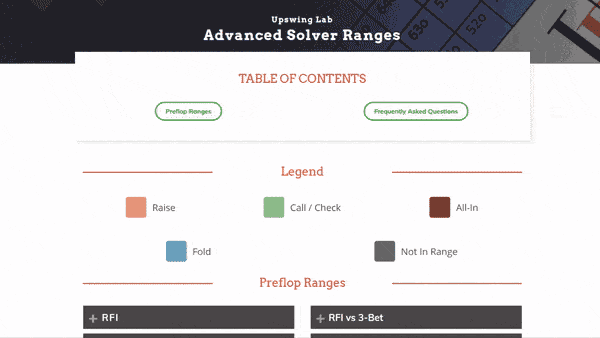Ten-Eight suited is a nice starting hand in No Limit Hold’em.
It certainly won’t be your biggest cash cow, but you can make a good amount of money in the long run by playing it correctly.
This article covers:
- How to play Ten-Eight suited in a variety of preflop situations
- 3 tips for when you miss the flop with Ten-Eight suited
- 3 tips for when you hit the flop with Ten-Eight suited
Please note that all of this advice is for standard cash games with no antes and 100 big blind stacks.
Let’s dive in.
Note: The best time of year to invest in your poker skills is coming up fast. Upswing Poker’s massive Black Friday sale starts on Monday!
All courses, subscriptions, tools and merch will be 25% off. This is the only sitewide sale for 365 days, so if you’ve been eyeing a game-changing course from a top poker pro, November 20th is the time to pull the trigger.

How To Play Ten-Suited Suited Preflop
Like with most starting hands, position is a vital factor to consider before putting in any money before the flop.
Here are the positions that will be referenced in this section:

Unopened Pots
When the action folds to you in the Hijack, Cutoff, Button, or Small Blind, you should raise with Ten-Eight suited. From all earlier positions, this hand should be folded. Limping is not an Upswing-recommended strategy.
Against a Raise
When a player has raised, you should only play Ten-Eight suited if you’re in the Big Blind. Sometimes you should just call, other times you should 3-bet — the right option depends on the position of the preflop raiser.
Against all of the early and middle positions, as well as the Cutoff, you should lean towards calling with T8-suited. But you can also mix in some 3-bets (around 25% of the time) against the middle positions and the Cutoff because Ten-Eight suited plays quite well in 3-bet pots.
(Note: If you are playing low stakes, these small frequency 3-bets don’t matter that much. If you’re more comfortable just calling with Ten-Eight suited in a live setting or in micro-small stakes online games, feel free to do so.)
When you are up against the Button, you should almost always 3-bet with Ten-Eight suited. It’s an ideal 3-bet bluff hand against Button raises — you’ll oftentimes force them to fold and you have solid equity as a backup in case you get called.
Against a 3-Bet
There are only 3 situations in which you should call with Ten-Eight suited against a 3-bet:
- Button vs Small Blind
- Button vs Big Blind
- Small Blind vs Big Blind
These positional match ups feature wide 3-betting ranges, so Ten-Eight suited becomes just strong enough to call and see a flop.
The exception is, of course, when your opponent is an extremely tight player who only 3-bets with monster hands. You can always use folding as a weapon against those players.
Against a 4-Bet
After you’ve 3-bet, Ten-Eight suited is always a fold against a 4-bet. It simply doesn’t have enough equity, nor does it realize enough equity, to call profitably.
Note: Look up how to play any hand in every common preflop situation in a few seconds. Get instant access to extensive preflop charts (for cash games and tournaments) when you join the Upswing Lab training course and community. Lock your seat now!

The Advanced Solver Ranges for cash games — one of six sets of preflop charts in the Upswing Lab.
3 Tips for Playing Ten-Eight Suited When You Miss the Flop
Tip #1 – Play strong draws more aggressively than weaker draws
Example of strong draw: You raise or call a raise with before the flop and the flop comes .
Example of weaker draw: You raise or call a raise with before the flop and the flop comes .
Open-ended straight draws, flush draws, and combo draws should be played more aggressively both as the preflop caller and as the preflop raiser. They have such a great chance at improving to a strong hand and winning the pot, thus you want to increase the size of that pot more. Playing these hands aggressively also balances out your range (so you aren’t only betting/raising with sets and two pairs).
Gutshot straight draws, on the other hand, are much weaker. You only have 4 outs to make a straight (compared to 8, 9, 13, or 17 outs for the stronger ones). Because of this, you should not be as eager to increase the size of the pot. They can still be worth a bet or a check-raise, but you have to be more selective with them.
Tip #2 – Hands with backdoor flush and straight draws make great bluffs too
You can’t rely only on the gutshots, open-enders, flush draws and combo draws to balance your value hands. You simply won’t have enough of them — and on some flops you won’t have any!
This is where a little bit of help from double backdoor hands comes into play.
For example, say you open-raise from the Button and the Big Blind calls. The flop comes and you hold .
You should always fire a c-bet in this case. You have 3 backdoor straight draws (with , , and runouts). You also have a backdoor flush draw and 3 direct outs to a second pair. These factors make it an awesome bluff candidate.
Tip #3 – After 3-betting out of position, you should often fire a c-bet on double broadway flops
Completely missing the flop does not necessarily mean you should waive the white flag.
Your 3-betting range has a lot of very strong hands. On many flops, you can leverage that powerful range to bet even with garbage hands.
For example, say the player on the Button open-raises and you 3-bet from the Big Blind with . The flop comes . You should always make a small c-bet, even though you have Ten-high and no draw.
You should make this move specifically on flops with two broadway cards (e.g. ).
3 Tips for Playing Ten-Eight Suited When You Hit the Flop
Tip #1: Don’t slow-play your strongest hands
Slow-playing is part art, part science. There are some good spots to do it, and a lot of bad spots to do it.
Since it’s most likely that you, my dear reader, are usually playing in live games, I am here to tell you that slow-playing hands such as two pairs and trips will actively cost you money.
Most poker players are way too passive, so your opponents aren’t likely to do the betting for you. Build your own pot by playing aggressively when you flop a big one!
Tip #2: Check back with medium-strength pairs in single-raised pots
Example: You raise with from the Button. The Big Blind calls. The flop is and your opponent checks.
Middle and third pairs generally constitute medium-strength hands on the majority of boards. It is advisable to adopt a passive playing approach with these hands, aiming to either reach a low-cost showdown or improve them into trips or two pair.
You should check back with your Ten-Eight suited middle pairs, like the one in the example, the vast majority of the time. This is because your hand is neither very vulnerable nor strong enough to get a lot of value.
Tip #3 – Play top pairs aggressively in position in single raised pots
Example: You raise from the Cutoff with and the Big Blind calls. The flop comes and your opponent checks.
If the flop is either Ten-high or 8-high, your top pair has great equity, but that can quickly change if one of the many overcards falls on the turn.
Hence, it is advisable to fire a large c-bet, typically ranging from 50% to 80% of the pot, in order to eliminate a significant portion of the overcard-type hands that the Big Blind might have within their range.
While your primary objective is to extract value from worse, you also gain substantial benefits from the folds you induce. It’s so nice to force a hand with an overcard to fold when they had 3 outs to take the lead!
Wrapping Up
Armed with this information, you will be able to play Ten-Eight suited well the vast majority of the time that you’ll get it dealt.
Now, the big question is: are you disciplined enough to do so? It’s a pretty hand that can be tempting to play in some not-so-profitable situations. If you can avoid those temptations, you’re likely to do well at the table.
That’s all for this guide! I hope you enjoyed it and that you learned something new from it!
If you have any specific questions about a situation you’ve found yourself in with T8 suited, let me know in the comment section down below!
Until next time, good luck, grinders!
Note: Want a reminder by email or text when the Upswing Poker Black Friday sale begins? Click here and fill out your info to make sure you don’t brick the biggest sale of the year!
The post How to Play Ten-Eight Suited In Cash Games appeared first on Upswing Poker.




